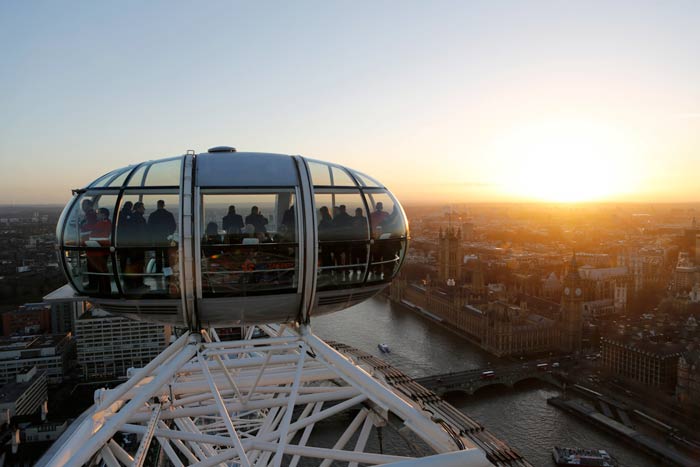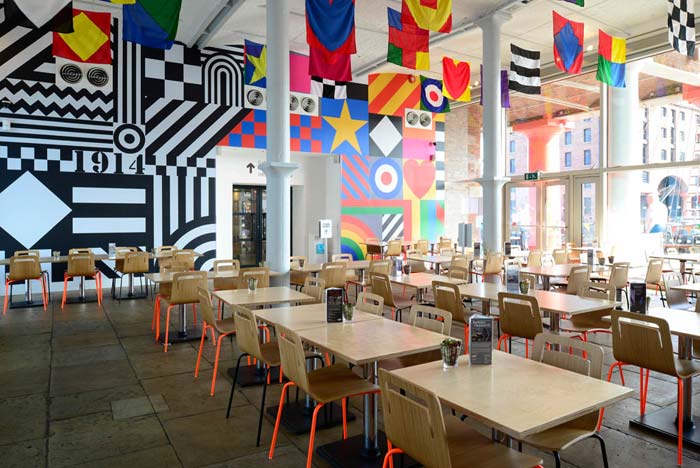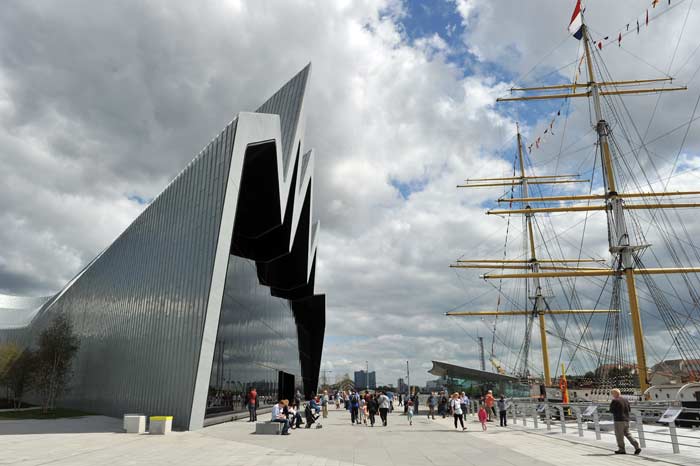It you don’t fancy going away overnight, there are still plenty of fantastic days out to be had across the UK – lots with access and facilities suitable for disabled people.
Days out can take any shape or form, from educational visits to museums or other visitor centres through to sheer fun and escapism as provided by any number of theme parks. Happily most are now able to provide the simple adaptations or devices that mean that everyone can be included. Gadgets like audio guides or just thoughtfully placed grab rails make an enormous difference to the way disabled people are able to enjoy a tourist attraction.
In fact more and more attractions are finding that simple adaptations are a way of attracting a larger audience. The best part about it is that sites usually only have to be adapted once, if correctly implemented. Fringe benefits to the attraction are that not only do they increase the numbers of paying disabled people but they can also offer a better experience to other audiences including, for example, older people perhaps becoming affected by age related mobility issues or even families with very young children in pushchairs and so on. Everyone wins!
Alton Towers
One of the best theme parks in the country, Alton Towers has over 50 rides and attractions for all the family, spread over a huge site.
Although the theme park has plenty of well known ‘thrill rides’ for the serious adrenaline fan such as Nemesis and Oblivion, families will also be able to enjoy the excitement of the Runaway Mine Train, river rapids and log flume among many others.
Alton Towers provides plenty of facilities as well as services and ways to navigate the park specifically for disabled people.
Tickets for disabled people should be purchased as usual online minus the carers ticket – this is added when you arrive at the pre-booked ticket collection window on presentation of supporting documentation.
As well as plenty of accessible toilets and free entry for carers Alton Towers runs a scheme whereby some disabled people are able to gain access to rides without queuing. A red wristband and a Ride Access Pass are available at the box office after presentation of documentation such as: Disability Living Allowance or Attendance Allowance award letter (dated within the last six months) showing that you receive the higher rate mobility component, a Personal Independence Payment letter (dated within the last six months) showing that you receive the enhanced mobility component or a current Blue Badge.
If you believe that you are unable to stand in a queue line for any other reason, arrangements can be made for a Ride Access Pass upon presentation of a letter from your GP or Consultant on headed paper (dated within the last six months) which clearly states that you are unable to queue and why (and needs to be presented along with photo ID).
Ride Access Passes are not automatically offered to guests who have a hearing or visual impairment unless they are in receipt of the higher rate DLA, enhanced PIP or they have a letter from their consultant. However, these guests should still ensure they go to the Box Office on arrival to obtain a white wristband which will ensure that staff can identify their needs and offer them full support, particularly in the case of an emergency.
Guests who are deaf or have partial hearing loss are not automatically eligible for the special access system. However, they can arrange special access for anyone upon presentation of a letter from your doctor/consultant which specifically states that you are unable to queue (rather than simply confirming your condition). For further detail refer to the disabled access section of the website.
Toilets with disabled access are available throughout the park, and do not require a Radar key.
Imperial War Museum
The Imperial War Museum, London, is one of the country’s leading museums, a real classic that aims to tell the stories of people’s experiences of modern war and conflict.
The permanent exhibitions in particular definitely give pause for thought and reflection but that isn’t to say that there’s an atmosphere of doom. Today’s IWM is about hope for the future and not repeating the mistakes of the past.
The recent £40m refurbishment project gave the museum a chance to rethink accessibility and they’ve certainly embraced it. The IWM must be one of the country’s leading museums for accessibility and facilities for disabled people.
Free parking is available on site for Blue badge holders but best advice is to book this (two working days) in advance. Once inside the building you’ll find it fully accessible with lifts to all floors with audio announcements and Braille signage – wheelchairs can be hired although seats are available at each level and lightweight folding stools can be borrowed from reception.
Large print texts and audio-guides are available for a number of the exhibitions and there are English subtitles on films and a short introductory film in BSL with subtitles at the start of the First World War Galleries. Tactile maps (and objects/artefacts) are also used in galleries and descriptive tours can be booked in advance of your visit and of course, assistance dogs are welcome in the museum.
There are 10 accessible toilets located on levels 0 – 3.
www.iwm.org.uk/
Email: contact@iwm.org.uk
Tel: 020 7416 5000
Culloden Battlefield Visitor Centre
The bloodiest of all the Jacobite battles, Culloden, was also the last battle fought on British soil.
The exhibition conveys the story of Culloden and a battlefield guide is available to take out onto the site which displays text, video and still images with audio that corresponds to where you are on the battlefield using GPS technology.
The visitor centre incorporates several accessible features including: disabled parking and toilets, lends wheelchairs and scooters and has an induction loop available throughout the centre. Partially sighted visitors can use the new audio description tool, DiscoveryPEN, available at the front desk. (Call the Centre for more information: 0844 4932159.)
The battlefield paths and roof access are wheelchair accessible and suitable for mobility vehicles.
Culloden Moor, Inverness, Highland, IV2 5EU
Tel: 01463 796090
culloden@nts.org.uk
London Wetland Centre
There are nine Wildfowl and Wetlands Trust (WWT) wetland centres bringing visitors and wildlife together. One of the best is on the outskirts of London where despite the planes overhead you’ll be able to spot a wide variety of bird species from accessible hides and an accessible viewing tower. The facilities are first class.
www.wwt.org.uk/wetland-centres/london/
Eden Project
The Eden Project utilizes incredible artificial biodomes built from hundreds of hexagonal and pentagonal cells to house plants collected from all over the world.
The two larger enclosures consist of adjoining domes that house thousands of plant species – each enclosure emulating a natural climate such as those found in tropical or Mediterranean regions.
This is another fine example of an accessible attraction and in fact won the Readers’ Choice Award at the Rough Guide to Accessible Britain Awards in 2010.
Accessible parking spaces are available in car parks Apple 1, Apple 2 and Banana. Park-and-ride buses do not run from these car parks but the visitor centre is just 32 metres down a tarmac path and assistance can be booked before you arrive by telephoning the access line: 01726 818895 or you could use the drop-off point in Apple 2 park.
The visitor centre has flat level access and wheelchairs are available to borrow (or you could pre-book a powerchair). Carers get into the Eden Project for free.
Zig-zag paths that cross the slopes have been used to keep steep gradients to a minimum and there are a number of accessible transport options on site. Path surfaces on site inside and outside the biomes are made from tarmac except for some of the paths in the Outdoor Garden in the Wild Cornwall area.
The Eden Project has an excellent team of volunteers to assist visitors with mobility or sensory impairments around the project. There is no charge for this service but to ensure that there is a volunteer available you’ll need to book at least two weeks in advance by telephone on: 01726 818558 or email: nhawkins@edenproject.com
www.edenproject.com
Tel: 01726 811911
Jorvik Viking Centre
This is one of York’s must-see attractions. The centre houses artefacts from the remains of houses dating back around 1,000 years to the times when Vikings settled in the city. Audio and video displays help to explain the objects taken from the five year long excavation of the Coppergate site.
The main attraction is the voyage back in time aboard the ‘time capsules’ that take visitors round the recreated Viking settlement, visiting houses and people at work and experiencing the sounds and smells of the age. The whole thing is quite immersive and provides an entertaining sensory experience.
Jorvik will suit many disabled people that don’t use a wheelchair full-time since the ‘ride’ does not require visitors to walk. However, other wheelchair users are advised to book in advance since only one wheelchair user can be in Jorvik at any one time. Furthermore, due to the limited space in the galleries and the nature of the reconstructed Coppergate area, mobility scooters cannot be catered for at all, meaning that some disabled people might need to swap to a wheelchair for their visit. (The centre has a wheelchair that they can loan to visitors.) Call the reservations department on: 01904 615505.
www.jorvik-viking-centre.co.uk/
London Eye
The London Eye provides superb views over Westminster and the rest of the Capital and is fully accessible for wheelchair users (ramp and boarding gates can facilitate a 37 inch wheelchair, including motorised wheelchairs) as well as people with assistance animals. All paying disabled guests can bring a carer free of charge.
Disabled customers are advised to purchase tickets online as appropriate, and on the day of their visit to bring reasonable documentation of disability to the ticket office where they can claim an extra carer ticket.
When you reach the boarding platform the London Eye is slowed down or stopped to make boarding simple for wheelchair users or people with mobility impairments. (Members of staff are always on hand to assist guests but are unable to physically lift guests into and out of capsules.) If you think you will need special assistance boarding the capsule, bring a carer to help, their ticket is free of charge.
For safety reasons only two wheelchairs are allowed per capsule with a maximum of eight in total on the London Eye at any one time. (It’s a very good idea to book your wheelchair space in advance.)
Tel: 0333 321 2001
accessiblebooking@londoneye.com
www.londoneye.com
Tate Liverpool
The northern branch of the Tate gallery showcases mainly travelling exhibitions and artistic events.
Admission to Tate Liverpool is free, but there is a charge for special exhibitions. Visitors with a disability pay a concessionary rate, and carers’ entrance is free. Assistance dogs are welcome throughout the gallery, with drinking bowls available on request.
Tate Liverpool provides a range of adapted interpretative material including information panels, labels and leaflets as well as materials in Braille, large print and audio (including all leaflets).
The ‘What’s On’ pages of Tate Liverpool’s website contain details of which events incorporate visual description or BSL interpretation and the foyer, ground reception room and auditorium all have hearing loops.
Dyslexic visitors can request various colours of transparent overlays, which may benefit them when reading black-on-white text captions and leaflets. Tate Liverpool is also currently trialling the provision of light-weight, high-definition magnifiers in the gallery spaces.
visiting.liverpool@tate.org.uk
0151 702 7400
TextPhone: 18801 7027400
www.tate.org.uk
Riverside Museum, Glasgow
The multi-award winning Riverside Museum is home to over 3,000 objects that detail Glasgow’s rich past from its days as maritime powerhouse to a glimpse into daily Glasgow life in the early to mid 20th Century.
Riverside is home to some of the world’s finest cars, bicycles, ship models, trams and locomotives. Interactive displays and the hugely popular historic Glasgow street scene bring the objects and stories to life.
The Riverside Museum relocated to its new accessible premises in 2011 and has very good access and facilities including interpretative materials in large print and Braille. Many of the artefacts and exhibits are in fact tactile and many have their own (interactive) audible and visual descriptive technologies.
The museum is suitable for wheelchairs and scooters alike but a small number of displays are not fully accessible to wheelchair users.
0141 287 2720
museums@glasgowlife.org.uk
www.glasgowlife.org.uk/museums
Attenborough Arts Centre
The newly refurbished Attenborough Arts Centre is part of the University of Leicester and just a 10 minute walk from the city centre. The Centre demonstrates brilliantly how the arts can be inclusive and accessible through the way it displays art of many different formats.
The premises are entirely accessible with excellent facilities.
0116 252 2455
arts-centre@le.ac.uk






